How to Buy an Apartment Complex in 7 Steps
Buying an apartment complex is more involved than investing in single-family properties and requires a deeper understanding of managing property finances. Typically, you can learn how to buy an apartment building in seven steps, including deciding if apartment complexes are right for you and what type of apartment to purchase.
If you need financing when buying an apartment complex, check out Muevo They offer short-term and long-term apartment complex loans with short-term loans up to 90% of the cost. Apply online and get prequalified in just a few minutes.
Buying an apartment building can be simplified into the following seven steps:
1. Decide if Buying an Apartment Complex Is Right for You
Before you start an apartment investing business, you want to make sure it’s the right investment strategy for you. Compared to purchasing single-family homes and small multifamily properties, an apartment building requires more research, more time, and oftentimes more capital and additional expenses. It’s important to weigh the pros and cons before buying apartment complexes.
Pros of Buying Apartment Complexes
There are many benefits to apartment investing. These include recurring income, spreading income across many units, lower per-unit maintenance costs, and the potential for extra income beyond collected rents. Lenders typically base their financing criteria on the property’s performance. The property’s value is often determined by rental income and its overall performance.
Recurring Income
One of the main reasons for buying apartment buildings is ongoing income. If the deal is right and the finances are sound, a good apartment building will throw off recurring monthly income as a positive cash-on-cash return.
Diversifying Income
If you’re an investor who rents single-family properties, you’re probably familiar with a common vacancy problem. If you have no tenants, you lose 100% of your income. Apartment buildings mitigate the effects of a high vacancy rate. If one unit goes vacant, you still have the others to generate income to cover expenses and perhaps still generate positive cash flow.
Lower Per-unit Maintenance
Economies of scale work in favor of the apartment building owner. For example, if you must redo a roof, it’s not just for one unit. That repair serves all the units in the building. If you need to repaint, you can use the same paint for multiple units and not waste materials resulting from only one unit’s need.
Extra Sources of Income
The larger the building, the more likely you can add additional sources of income, such as vending machines, ATMs, and coin-operated laundry facilities. Renting parking spaces and space for billboard advertising can also provide additional income. One pro tip is to charge additional monthly rent for air conditioning units, upgraded appliances, and upgraded kitchens and bathrooms.
Revenue-based Financing
Unlike a single-family property, financing for apartment buildings is based mainly on the financial performance of the building (as opposed to your personal financial and credit situation). So, banks will look mainly at the financial situation with the building for approving a loan. This is advantageous if your FICO score is low.
Valuations Based on Rent Rolls
When buying apartment buildings, the value of the investment is determined in great part by the financial performance of the building. So, if you can increase rents, you can increase the value of your holding.
Cons of Buying Apartment Complexes
Buying an apartment building is more complex than acquiring a single-family home or even a small multi-unit property. The management will be a bit more intensive and the nature of tenants will be different. In addition, expect more frequent maintenance and property management to be more expensive.
Intensive Management
Once buildings are larger than four units, management becomes a much more intensive process. The ability to manage the property yourself becomes an issue, and you need to consider some form of outside management.
One option is hiring a professional property management company. In other cases, you’ll hire an onsite manager. Both come with additional costs and the need to supervise the manager. Typically, property managers charge 10% to 12% of gross monthly rents.
High Tenant Turnover
When tenants move into a single-family dwelling, they usually plan to stay for a long time. They typically become more invested in the property, engage more in community events, and become familiar with the neighborhood. Tenants in apartments, on the other hand, are much more transient.
In a single-family home, it’s not uncommon for a tenant to stay five or more years. In an apartment, tenants stay, on average, less than two years. When buying an apartment building, plan for tenant turnover and higher marketing costs to acquire new tenants.
Less Tenant Care
A renter in a single-family dwelling will tend to treat the property like their own home. However, tenants in an apartment are different. Tenants sometimes don’t treat apartments with the same care, so repairs and maintenance beyond normal wear and tear will be much more common with apartments.
Higher Maintenance Costs
When buying an apartment building, be prepared for higher tenant turnover and less care of the units. You’ll also have more ongoing maintenance with apartments than with single-family properties. Per-unit maintenance costs will be lower the more units a building has, but more time is needed for maintenance and repairs.
Overall maintenance costs are typically higher in apartment buildings. Avail CEO Ryan Coon cautions investors to consider that when major problems arise, such as heating system failure, it will impact more tenants, and repairs will be more costly. Replacing the plumbing system for a single-family home with one bathroom is cheaper than replacing the plumbing for a five-story building.
2. Choose the Type of Apartment Complex to Buy
If you’ve decided that buying an apartment complex is a good option for you, the next step is to consider the type of apartment building you want to acquire. This involves examining your personal and financial criteria for the purchase, the number of units desired, and understanding the class of apartments available for purchase.
More items to consider when choosing the type of apartment building to buy are:
Examine Your Personal & Financial Criteria Before Investing in an Apartment Complex
Consider your level of ambition and risk threshold, since both will affect the kind of apartment investments you’ll consider. The two main considerations along those lines are the number of units and the return on investment (ROI) you’re seeking.
Consider the Number of Units
If you’re conservative and only looking to supplement your retirement income or have a side income, you may want to stay with buildings no larger than six units. If you’re looking for higher income, and willing to take on the associated risks, consider larger buildings with 12 to more than 20 units.
Know the Types & Classes of Apartments
Apartment buildings come in a variety of forms. There are converted houses with multiple units, garden apartments with two stories, and properties with a dozen or more units in a single building. There are also multi-story mid-rise and high-rise apartments with scores of rental units.
In the U.S., there’s a rating scale with letters ranging from A to D, which attempts to classify the caliber of apartment buildings:
- Class “A” apartment building: Luxury rentals less than 10 years old, or older renovated buildings; garden, mid-rise, or high-rise buildings; amenities (e.g., pools, tennis courts, and clubhouses)
- Class “B” apartment building: Up to 20 years old; generally well-maintained; may have amenities; facilities are more dated than in Class “A” apartment buildings
- Class “C” apartment building: Up to 30 years old; limited or no amenities; may have an apparent need for renovation and repair
- Class “D” apartment building: Typically, over 30 years old; sometimes low-income, subsidized housing; few amenities; buildings usually need renovations and repairs
Most investors purchase class “B” and “C” properties because their cost is typically lower than class “A” properties, yet class “B” and “C” properties don’t demand the repairs, renovations, and intense management that class “D” properties require.
Consider Your Return on Investment
When apartment investing, you want to consider your return on investment (ROI). How much profit a building generates is a function of its size, income, and how much cash you have invested in the property. A smaller building with fewer units isn’t going to have the money-making potential of a larger property, but it won’t require as much cash to purchase or be as management-intensive.
Larger buildings with more rental units can produce more income, but they will require a larger upfront investment. Plus, the more units, the more you’ll need to consider how complex the day-to-day management will be. If you hire a property management company, it will take from your overall cash flow.
3. Locate an Apartment Complex to Buy
There are many ways to locate an apartment building to buy. You can search for yourself, without professional help. Local Real Estate Investment Associations (called REIAs) may be helpful with buying an apartment building. Or, you can enlist the services of professionals, including real estate agents, commercial real estate agents, or business brokers.
Some of the ways you can locate an apartment complex to buy are:
Search ‘For Sale by Owner’ Apartment Complexes
A great advantage of for sale by owner (FSBO) properties is that the seller is not paying a real estate commission. That’s 6% or 7% you might be able to negotiate off the asking price. Some FSBOs list higher prices knowing buyers will deduct commissions from their offer. You also may be able to get favorable terms, such as owner financing, and not have to get a bank loan.
Use a Local Real Estate Investment Association (REIA) to Find an Apartment Complex
If you search for an apartment building yourself, consider joining a local real estate investment club such as those offered by the Real Estate Investors Association (REIA). These groups provide networking with other investors who may have apartment buildings for sale, or know someone who does.
Engage a Real Estate Agent
The real estate sales and brokerage industry provide access to the largest body of properties for sale, including apartment buildings. Every real estate agent has access to one or more Multiple Listing Services (MLS) that list all the properties for sale by every agency that participates in that MLS. Multiple-unit properties and apartment buildings are also listed in that database.
Real estate agents know the market and know how to determine values, so buildings will tend to be priced at the maximum allowable market value. Not every agent is experienced with selling apartments, so you’ll want to be sure you are working with someone who has a track record of multi-unit apartment complex sales.
Consider a Commercial Real Estate Agent When Buying an Apartment Complex
Commercial real estate agents specialize in selling commercial properties and have better access to apartment building listings. They also have access to the listings of other commercial brokerages that are not part of the typical MLS and know more details about the properties currently on the market. Commercial real estate agent commissions are typically in the 7% to 10% range.
Commercial real estate agents understand the different metrics used to evaluate apartment buildings and other financial principles you may not yet be familiar with. If you’re just learning how to buy an apartment complex, let them know you are a beginner and ask them to clarify things you don’t understand. Also, consider working with a buyer’s broker who can represent you during the transaction.
Consider Using a Business Broker
Business brokers sell businesses, but they also sell mixed-use properties such as commercial buildings that have residential units, smaller apartment buildings of five to 10 units, and apartment buildings. Like commercial real estate agents, business brokers might use business or finance terms you’re unfamiliar with. Don’t be afraid to ask for clarification.
4. Evaluate the Potential Apartment Complex & Neighborhood
When evaluating and buying an apartment building, be sure to consider the location, the numbers and sizes of units, the property’s amenities, if any, and any construction or renovation issues so you can address these early on.
Perform two financial assessments. The first is a basic estimate of income and expenses to see if the property will generate positive cash flow. If it does, perform a full evaluation of the building’s financials, including rent rolls, vacancy rates, rental loss, and any expenses you will acquire with the property (such as utilities and municipal costs). This is to make sure the purchase is viable.
More details about evaluating the apartment building and neighborhood are:
Assess the Location of the Apartment Complex
As with any real estate investment, you want to purchase an apartment building in a desirable area. Consider the outcomes of buying properties in blighted neighborhoods no matter how enticing a cheap purchase may seem. Some investors do make purchases in tough neighborhoods work, but if it is not in alignment with your goals, or you don’t have the skills to manage these properties, you may want to look elsewhere.
Better-located properties provide a stronger base of tenants, better tenants who will take better care of your property, higher rents, and a greater chance of appreciation for the building.
Consider the Number & Size of Units in the Apartment Complex
As mentioned earlier, if you are considering buying apartment buildings, you’ll want to consider how many units each property has. You’ll also want to consider the square footage of those units and the number of bedrooms and baths.
Studio or efficiency units can be difficult to rent outside of college campuses and high population areas. One-bedroom units are easier to rent than studios, but your best bet is two-bedroom units and larger. A couple, particularly with a child, will want that second bedroom. Even a single person may want a second bedroom for guests or as a home office. It opens a larger market of potential renters than a one-bedroom does.
Note Apartment Complex Amenities
Amenities help drive interest in your property. These include everything from washers and dryers in the units to covered parking or garages, convenience stores, vending machines, swimming pools, spas, and gyms. The more amenities the property has, the more desirable it will be to tenants, and may command higher rents.
Pay Attention to Construction Details When Buying an Apartment Complex
The five most common problem areas of apartment building construction are:
1. Flat Roof
Flat roofs tend to breed all kinds of problems, particularly related to leaks. However, it’s somewhat hard to avoid them because so many older apartment buildings have flat roofs. Just be aware they can be problematic.
2. All Frame vs Brick
If a building is all wood frame, it’s prone to exterior paint and rot issues. That means the more exterior wood, the more exterior maintenance you’ll have to pay for. It also causes a more expensive insurance rating for fire.
3. Old Plumbing
If the building is more than 30 years old and the plumbing has never been replaced, be prepared for frequent plumbing repairs. Old pipes can leak and deteriorate. More importantly, you can have issues with lead, and pipes wrapped in asbestos mean more expenses to remove it.
4. Shared Utilities
Older apartments sometimes have shared systems for heat and electricity. This means the landlord pays for those utilities and tries to prorate it among tenants by charging higher rent. Since tenants aren’t paying for heat, and it’s not uncommon for some to raise the heat with a window open in the winter, increasing the landlord’s utility costs.
5. Asbestos & Lead Paint
Old buildings often contain asbestos in the insulation, HVAC systems, and exterior siding. Additionally, the interior may contain lead-based paint. Depending on where you live, you may have to mitigate those issues. It’s important to have a building inspector look for those materials, and check with your city and state to find out what remedies are required if they are present in the building.
Examine the Basic Numbers Before Buying an Apartment Complex
There are several basic numbers you can look at as you are evaluating an apartment building, including rent rolls, occupancy rate, and cost per unit. These will provide a preliminary look at the profit potential before you make a more thorough examination of the property’s financials.
The numbers you should examine before buying an apartment building are:
Apartment Complex Rent Rolls
Get the current rental amounts for every unit. Total those and multiply by 12 to get a ballpark idea of the gross annual rent. This is called the rent roll. A tool used by investors based on the rent roll to compare apartment building purchases is the gross rent multiplier. It compares the value of the building as a function of rents.
Apartment Complex Occupancy Rate
Occupancy rates tell you how much of the time a building is occupied. Vacancy rates tell you how much of the time a building is vacant. Ask about the property’s occupancy and vacancy rates. Check with real estate agents and landlord groups in your area to find out what vacancy rates are typical. Compare the figures to local industry averages.
Cost per Unit in an Apartment Complex
This is calculated by dividing the building’s purchase price by the number of units it contains. It will allow you to make comparisons with other apartment buildings you are considering and compare that figure with local average per-unit pricing. This figure can become a good bargaining tool if you want to purchase the building but the price is too high.
Evaluate the Full Financials Prior to Buying an Apartment Complex
Evaluating basic numbers gives a snapshot of the property’s financial performance. Before you make an offer, you need to get detailed financials for the property for one to five years. Gross operating (rental) income, expenses, vacancy rates, and certain ratios examine the viability of an apartment building and will affect your ability to get financing.
The numbers to help you evaluate an apartment complex include:
Gross Operating Income
Gross operating income is the total rent collected from the property. If you are buying a vacant apartment building, you may need to perform a potential rental income (PRI) analysis. A PRI is based on a rental market analysisaccording to the leases and terms of comparable properties in the area.
Expenses
Expenses when buying apartment buildings include mortgages, interest, insurance, advertising, maintenance, repairs, utilities, municipal costs, property and other taxes, fees, management expenses, business expenses, and professional services.
It’s important to know what the total expenses are for the year, and what the patterns of expenses look like each month. Some months will have higher expenses than others, such as heating and snow removal in winter months, and cooling and landscaping in warm months.
Net Operating Income (NOI)
Net operating income is what remains from collected rent after paying all expenses. It’s a good idea to examine net operating income both monthly and annually. Net operating income is also known as cash flow. Cash flow can be positive, meaning you made money during that period, or it can be negative, meaning the property cost you money during that period of time.
Net Operating Income Example
| Monthly | Annually | |
|---|---|---|
| Potential Rent Roll | $3,600 | $43,200 |
| – Vacancy (10%) | -$360 | -$4,320 |
| = Gross Operating Income | $3,240 | $38,800 |
| – Expenses | $2,160 | $25,920 |
| = Net Operating Income (Cash Flow) | $1,080 | $12,960 |
This is an example of computing net operating income for a six-unit building, with each unit renting for $600 per month. In this example, the cash flow is positive, with $1,080 in monthly income ($12,960 per year).
Profit & Loss Statement
The table above is a simplified version of presenting monthly and annual finances. You should be provided with a cash flow statement, income statement, or profit and loss statement. Fundamentally, these are the same thing. They give a complete picture by itemizing all income and expenses, allowing you to examine each expense category instead of one combined sum as in our example above.
Capitalization Rate
The capitalization rate (cap rate) shows the rate of return on the investment. It’s an important figure that allows you to compare one investment scenario against another, or one property against another. The cap rate does not include mortgage debt.
The formula is:
Cap rate = Net operating income / Purchase price
Let’s use the example from above with a purchase price of $200,000.
Cap rate = $12,960 / $200,000
Cap rate = 6.48%
Whether 6.48% is a good cap rate depends on a couple of things. First, it depends on other properties in the area you are considering. If two other similar properties in the area have cap rates of 11% and 12%, then the one above isn’t as good a choice.
It also matters how you buy the property. In the NOI example above, let’s presume the $25,920 included interest of approximately $7,000 per year. If you paid all cash for the building, you would not have the interest expense. Therefore, your expenses would have been $18,920, resulting in higher net operating income of $7,000 per month, or $19,960 annually with a cap rate of 9.98%.
Due Diligence When Buying Apartment Complexes
If you’ve decided to move forward with a purchase, you need to investigate a few more things. Some of these should be written into your offer to purchase and subject to your approval, e.g., satisfactory review of leases, the profit and loss statement, and property inspections.
Determine Why the Owner Is Selling
When buying an apartment building, try to ascertain why the owners are selling. The seller’s circumstances are an important consideration for negotiating a deal. For example, if a seller wants to retire and move, his or her motivations are very different than if faced with a property needing major repairs or in preforeclosure.
It’s challenging trying to unearth something with the property that a seller tried to hide. As a general rule, sellers are required to disclose property conditions they are aware of. Undisclosed problems are costly, so you want to discover issues and ask for the seller to remedy them or you will inherit them.
Obtain Copies of Apartment Complex Leases
Leases contain rent amounts, terms of the lease, pet policies, security deposits, and who pays for utilities. If you keep the existing tenants after you take ownership, you inherit the existing leases, so you need to be familiar with them.
Request Apartment Complex Tax Returns
Request the property accounting records and tax returns, and further investigate any discrepancies. For example, if the seller shows $12,000 in net operating income in their accounting records, but counts $9,500 on the tax return, that needs to be explained.
Conduct Inspections of the Apartment Complex
You will want to have a licensed building inspector perform a thorough inspection of the property. Apartment buildings frequently have shared systems, various levels of condition throughout each unit, and potential issues with common areas and amenities. You’ll want a detailed inspection report of what needs to be repaired and negotiate serious issues.
5. Make an Offer on the Apartment Complex
Making a good offer on a property involves knowing the current market value for similar properties in the area and the potential for profit. You may find it helpful to perform a rental market analysis, where you compare recently sold properties, properties currently for sale, and expired listings.
Get an Appraisal of the Apartment Complex
Appraisals for apartment buildings are different than they are for residential rental properties. There are three methods used together to determine current market value: market value, replacement cost, and income approach.
Here are the three methods of an apartment building appraisal:
Market Value Approach
Market value will look at similar properties and their selling prices. For example, if you are considering purchasing a six-unit building with six two-bedroom apartments, the appraiser will look at similar buildings and what they sold for within the prior year. Market value per-unit is considered in this approach.
Replacement Cost Approach
Replacement cost examines the amount it would cost per square foot to build a similar building. If you are looking at a four-unit building with 4,000 square feet, and construction costs in your area run $100 per square foot, the replacement cost will be valued at $400,000.
Income Approach
The income approach uses the net operating income and local capitalization rates to determine the value of the investment. To accomplish this, take the net operating income and divide it by the cap rate.
Value = Net operating income / Cap rate
For example, if the net operating income of the building is $46,000 and the cap rate in your area is 10%, then:
Value = $46,000 / 10% = $460,000
Rent Affects the Apartment Building’s Value
It’s important to understand that if you increase rental income, you increase the property’s value.
For example, assume you purchased the above building for $460,000 and raised the rents 20%, increasing the net operating income to $55,200. Using the income approach, the building’s value would now be $520,000 ($55,200 / 10% = $552,000). You will have increased the property’s value to $92,000.
6. Finance the Purchase of an Apartment Complex
When buying an apartment building, successful funding requires understanding the types of financing available for buying apartment complexes, recourse versus non-recourse loans, and lender required reserves. Also, because it affects net operating income, how lenders look at occupancy during the loan approval process is also important.
The areas you need to consider when you finance the purchase of an apartment building are:
Types of Financing for Apartments
Financing for apartments is fundamentally different than residential purchases. Commercial lending, as opposed to residential lending, is what you will likely use, with conventional loans, seller financing, or private loans your typical options.
Commercial as Opposed to Residential Lending
Apartment buildings will often be financed with commercial as opposed to residential loans. While residential loans may be an option for two- to four-unit buildings, particularly if you are going to live in one of the units, you should familiarize yourself with commercial loans.
Conventional Loans
Unless the multi-unit building is four units or less and you plan on living in one of the units, government loans such as the Federal Housing Authority (FHA) and Veterans Administration (VA) loans are not available. The vast majority of apartment financing comes in the form of commercial loans from banks and financial institutions.
Private Loans & Seller Financing
Instead of conventional lending through a bank, you can consider owner financing, where the seller acts as a lender. Sellers of commercial or investment property are sometimes willing to offer seller financing because the interest they earn means a greater return on their investment.
With the potential for interest rate income, you might find private lenders or investors willing to lend money on good apartment deals. Instead of going to a bank, these lenders provide the purchase money and you’ll make payments to them.
Using Your Retirement Funds to Finance Your Purchase
An alternative means of financing your apartment complex purchase is to tap into your retirement funds. If you have savings in an IRA or a Solo 401(k) plan, you can open a self-directed retirement account to invest in a variety of assets, including real estate.
With a provider such as Rocket Dollar, you can rollover an existing plan or make direct contributions, allowing you to take advantage of tax-deferred retirement funds and invest in real estate while staying IRS-compliant. Rocket Dollar can get you set up for a $360 registration fee plus $15/month. Schedule a free call today to learn more.
Recourse vs Non-recourse Loans
With a recourse loan, if you default on payments, the lender can pursue financial remedies beyond foreclosure. With a non-recourse loan, the lender can only go after the property. Non-recourse loans are the obvious choice, but harder to get since lenders require steeper down payments. These loans also typically carry higher interest rates.
Putting the Apartment Complex in a Legal Entity
If the lender allows it, it is best to not buy an apartment building in your name. Because of the complexities and risks inherent in apartment ownership, you should only buy an apartment building in the name of a business entity. Your accountant and attorney can advise you whether a limited liability company (LLC) or corporation is a better choice.
Lender Required Reserves for Buying an Apartment Complex
Lenders will typically require you to maintain one or two common types of reserves. The first is interest reserves, which will help ensure you can meet the periodic payments. The other is cash reserves to ensure you can meet operating expenses, insurance, taxes, and repairs.
Combined, reserves may total as much as six months of payments.
Key Items Considered by Lenders During the Loan Approval Process
Because net operating income is so important to real estate investing, especially when buying an apartment building, lenders will look favorably on properties with good market potential, high occupancy rates, and long-term tenants. This is another argument in favor of doing your due diligence upfront by evaluating income, expenses, vacancy rates, and the property’s condition.
7. Close on the Purchase of the Apartment Complex
Three things to consider when closing on an apartment investment include selecting an escrow agent or title company experienced with apartments, closing on a financially advantageous day of the month, and having security deposits properly transferred to you.
Select an Escrow Agent or Title Company Experienced With Apartments
As with any kind of real property purchase, you need to select an escrow agent or title company to close the transaction. In some states, attorneys handle real estate closings. In other states, title or escrow companies are used. Make sure the company you work with has experience with apartment investments.
Close on the Apartment Complex on a Financially Advantageous Day of the Month
The best time to close is either the last couple of days or the first few days of the month. Rents are paid in advance. Mortgage payments are made in arrears. Closing right after rents are collected provides almost a full month of cushion before the next mortgage payment is due. Closing on the last day of the month can also be advantageous since it can save on interest payments.
Ensure Apartment Complex Security Deposits Are Properly Transferred to You
When you close on the property, security deposits become your responsibility. Most states require landlords to keep the security deposits in a separate escrow account. Even if your state doesn’t require this, that money, with interest, belongs the tenants unless it’s required for damage or unpaid rent. Make sure security deposits are turned over at closing and get them into separate escrow accounts for each tenant.
How to Buy an Apartment Complex Frequently Asked Questions (FAQs)
Below, we’re going to answer some of the most frequently asked questions on how to buy an apartment building.
Some of the most frequently asked questions about how to buy an apartment building are:
How much money can you make if you buy an apartment complex?
Buying an apartment building can be lucrative if you find a good deal, the property has positive cash flow, and the ROI is high. However, there can be a lot of expenses (e.g., property management fees, rental property insurance, and property taxes). These affect how much money you make after you buy an apartment complex.
How do you buy an apartment complex with no money down?
Typically, you’ll need at least 10% down to buy an apartment building. However, while rare, there are ways to buy an apartment building with no money down. This can be done if you wholesale the property, partner with an investor, or find a hard money lender who will finance 100% of the loan.
Are there any tax benefits of buying an apartment complex?
There are typically rental property tax benefits involved with an apartment building. Some of these tax benefits include writing off mortgage interest, expenses, and repairs, and depreciating the building.
Bottom Line
Buying an apartment complex is typically best for more experienced investors. First, decide if buying an apartment building is right for you, and then choose the type of building to purchase based on research and evaluation of the property. If you’re not paying with all cash, you’ll typically need to find an apartment building loan.
If you’re wondering where to get an apartment building loan, check out Muevo. They will typically fund up to 90% of the cost on short-term loans and up to 75% of the value on five- to 30-year loan terms. They offer competitive rates and you can get prequalified online within just a few minutes.


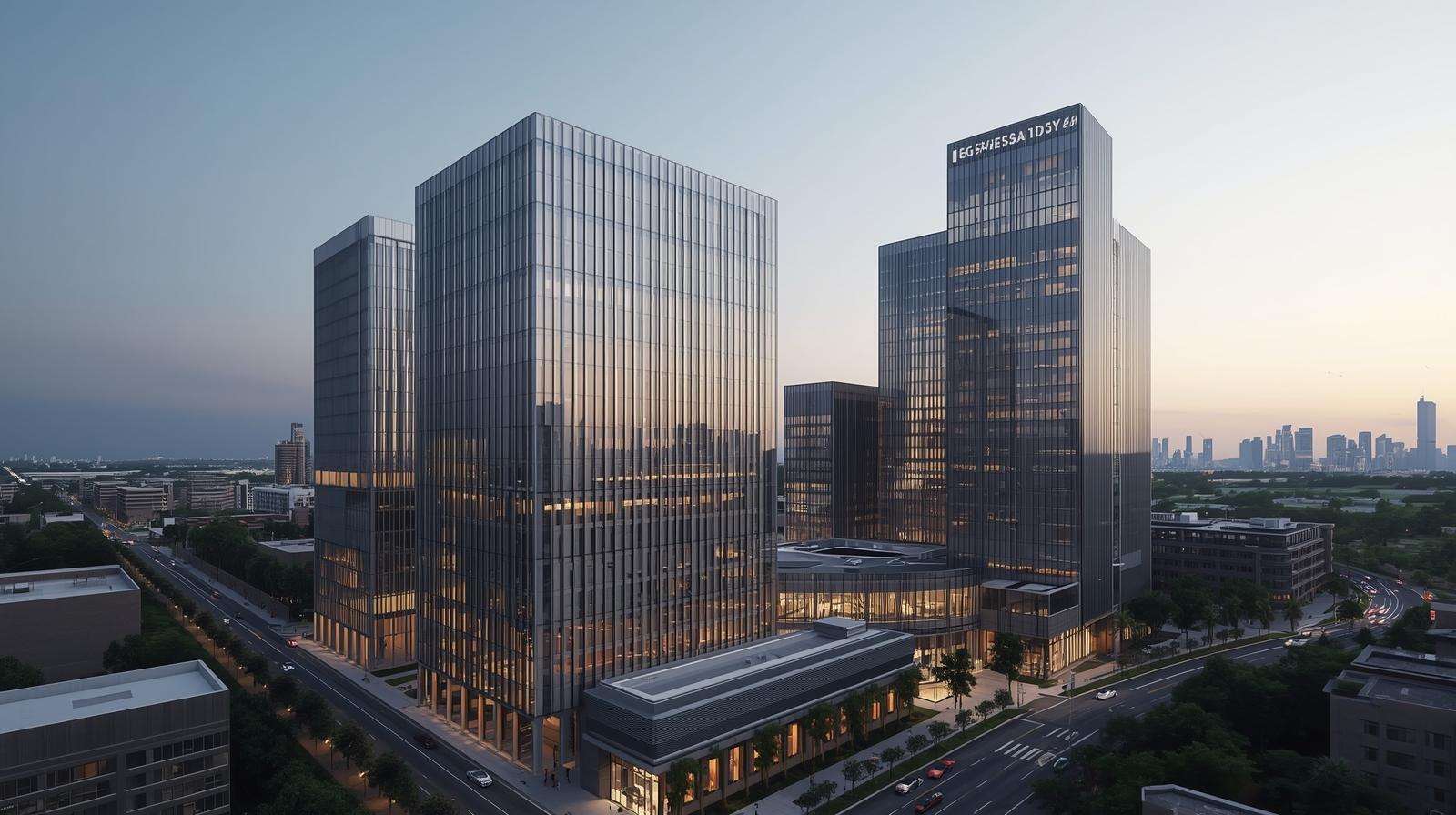
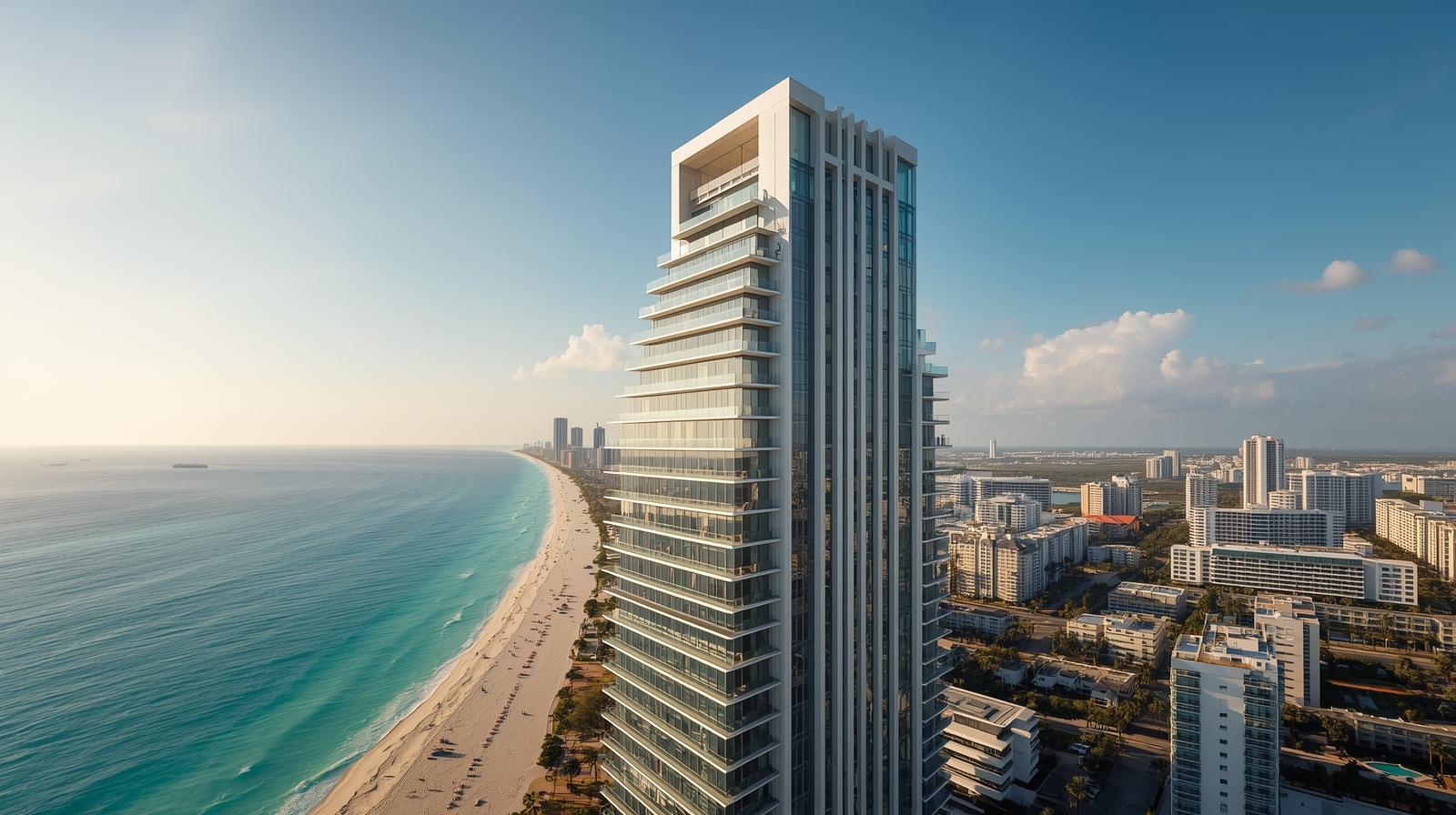
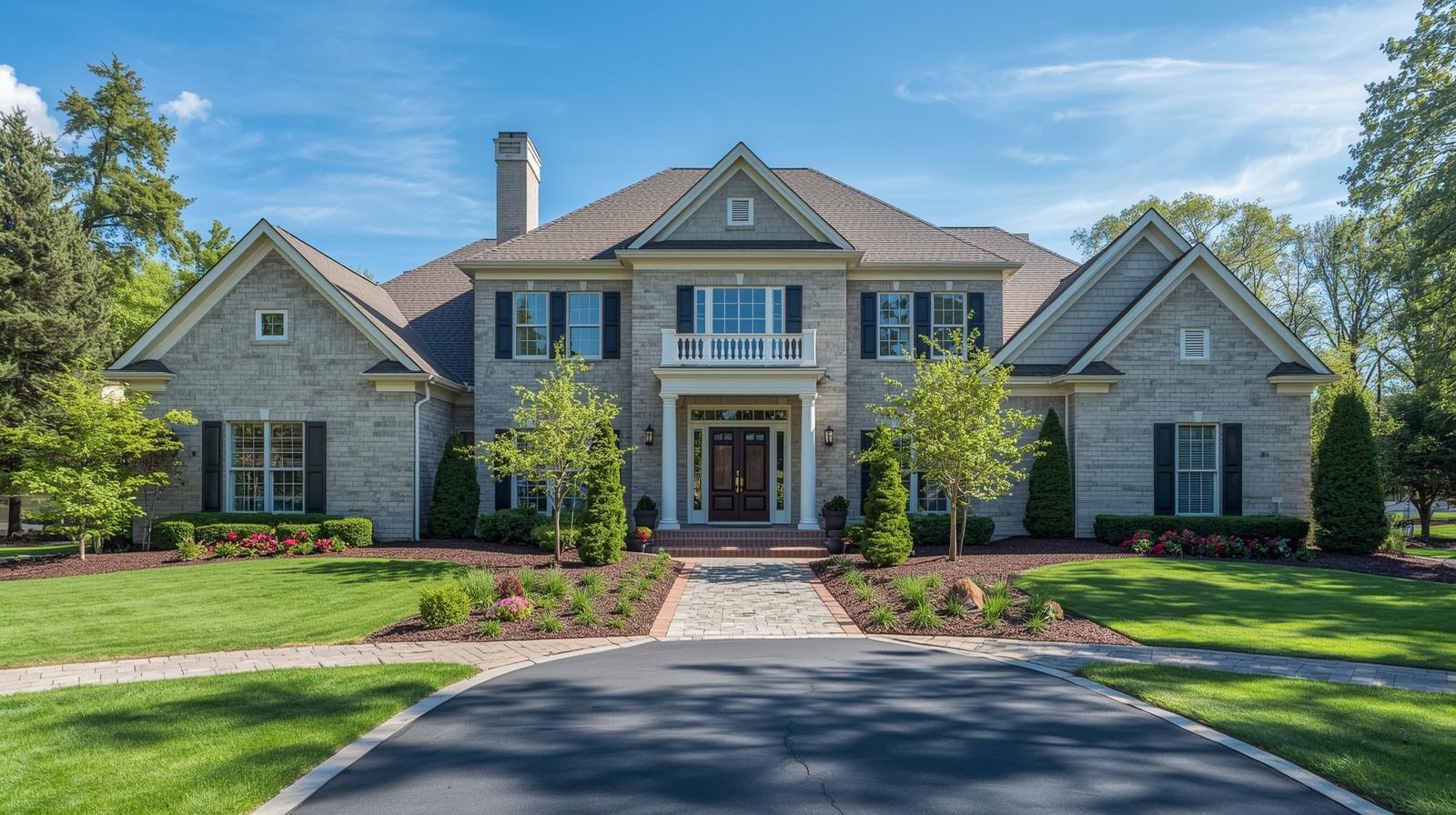
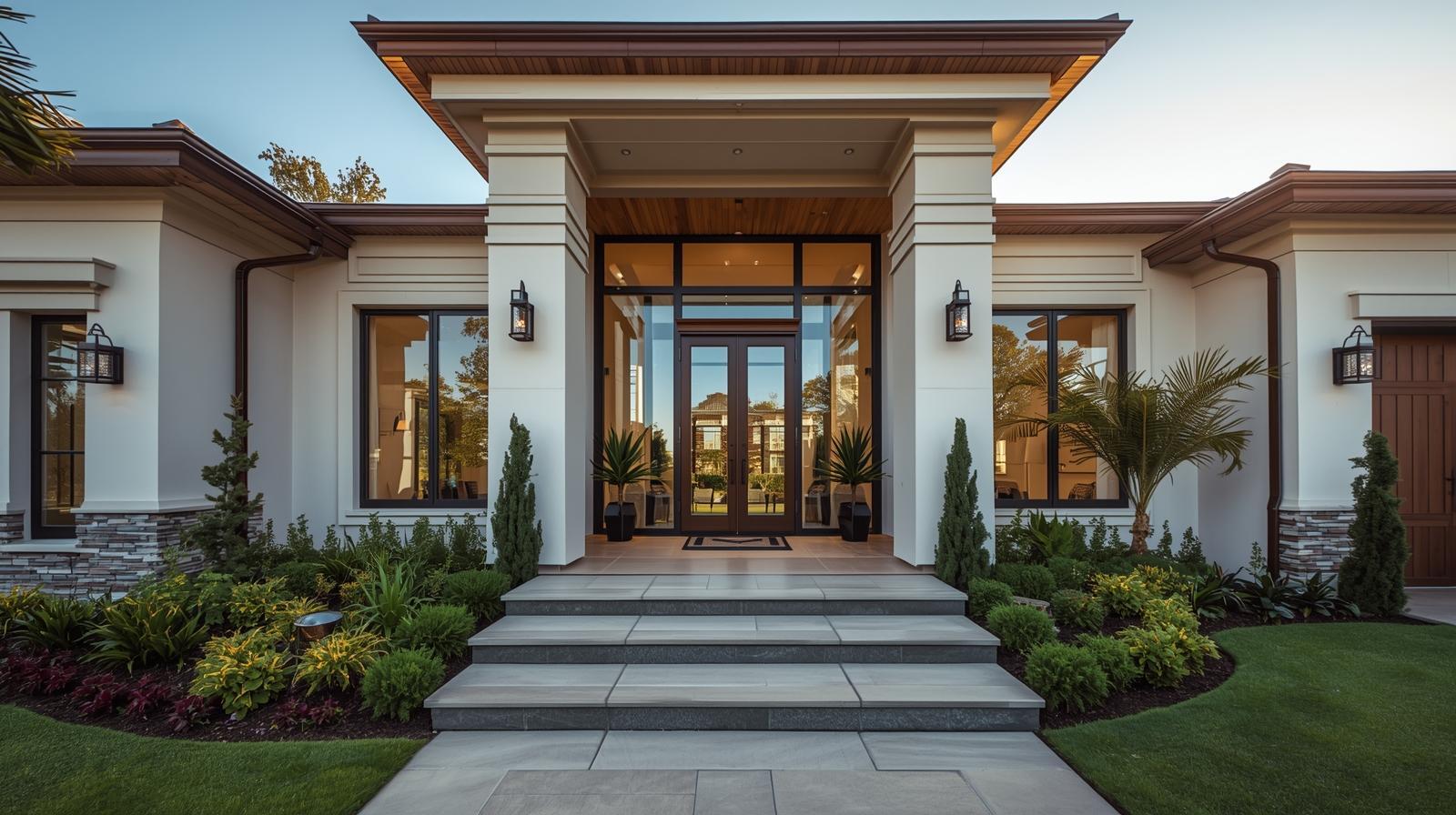
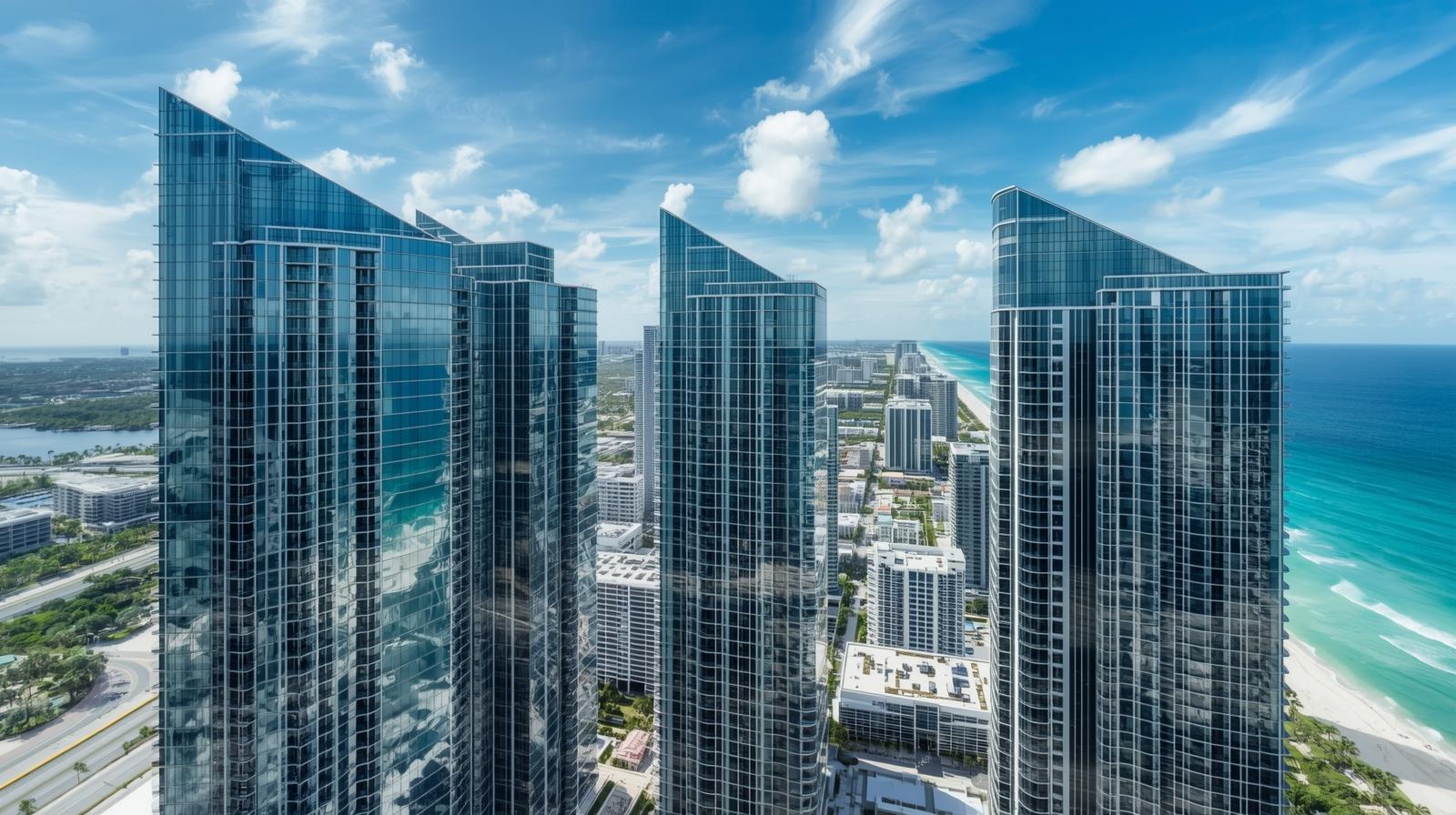
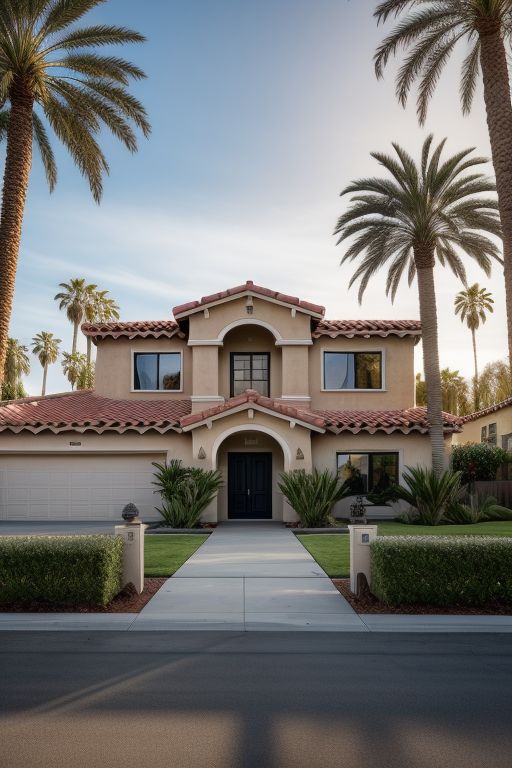


Related Posts